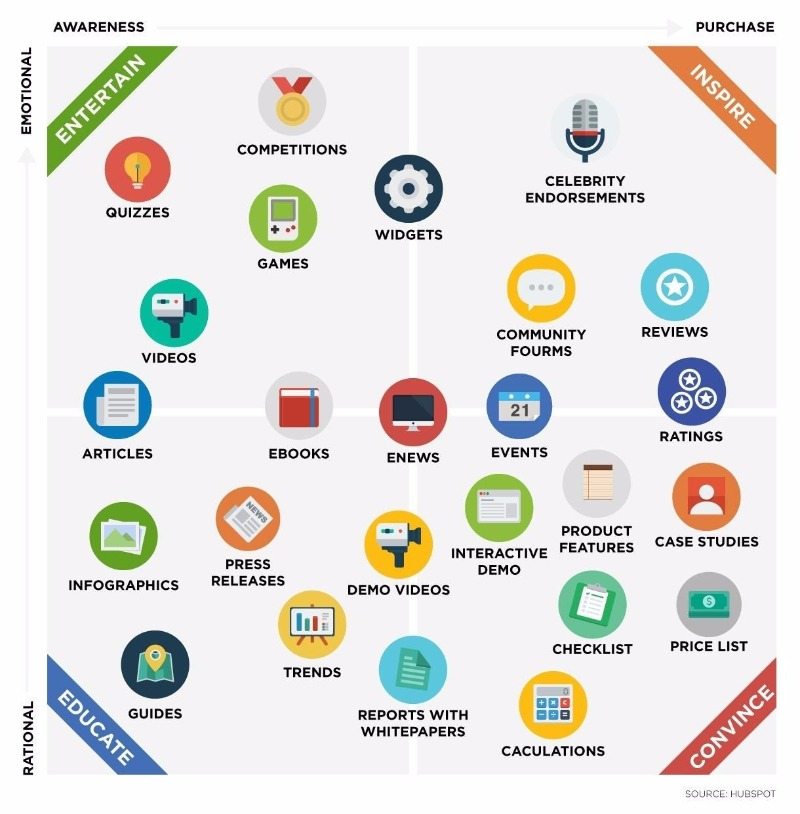Content Types and Channels
Episode #5 of the course Content marketing fundamentals by Courtney Goes
Resonating with your audience isn’t possible if your content is never found, so today, we’re going to talk about different types of content and the various channels you might use to get that content out there.
After developing detailed target personas and what their needs are, determine where these personas are spending their time. Are they always on Instagram? Networking on LinkedIn? Reading email newsletters? Downloading white papers? By getting to know their content consumption habits, you can figure out what kind of content to publish and where.
Types of Content
Although most people think of blog posts when talking about content, it comes in many forms. The reason you created your audience personas in yesterday’s lesson is to now determine the forms of content your target audience prefers.
This could be anything from email to videos and is completely dependent on your audience.
Here are a few examples of content types that companies regularly use:

Source: Hubspot
Consider your audience and what their life is like. For example, if they’re time poor, they may prefer audio or video over a white paper. Think about whom they trust and where they look for confirmation—do they value reviews, ratings, forums, or celebrity endorsements? Try and identify at least five different types of content that would appeal to your audience.
Content Lifecycle
Not all content is created equal, and because of this, most businesses use a wide variety of content types. All content has a lifespan, so think about its longevity and whether you want it to be effective for an hour, a day, or forever.
For example, a photo you share from an event may only be interesting to your audience for a day, but a product review can still be relevant years later.
Similarly, while “going viral” and hitting a huge number of eyeballs may initially be considered a sign of success, creating content that’s valuable to your audience and that steadily grows in traffic over time will often give you greater returns.
When you’re planning your content calendar, consider your long-term goals, as well as short-term goals. Spend time creating useful, unique, and insightful content that gives your audience a well-rounded diet and pays dividends in the long run.
Channels
There are two very important questions to ask yourself when choosing the right channels for your content. The first is: “Where are my customers?”
By this, I mean, where do they like to “hang out” online and consume the type of content you’ve decided to produce? For example, if they value reviews, think about where they’re sourcing them from. This could be on your own product pages, a video on YouTube, a comparison website, or an online store.
Choose to focus on no more than three channels that are best suited to your target audience persona.
The second question to ask is: “What channel suits this content type?”
Think about whether the content is visual, audio, or written, how accessible you want it to be (e.g. your own website versus a social media channel), and its longevity.
For example, if you’re creating an infographic, you might consider Pinterest, but if you’re producing a product demo video, it’s probably better suited to sit on your website where it’s in context.
Now that you’re clear on what types of content and channels will help you reach your target audience, tomorrow, we’re going to explore topic research planning.
See you then,
Courtney
Recommended book
The Content Trap: A Strategist’s Guide to Digital Change by Bharat Anand
Share with friends

